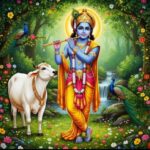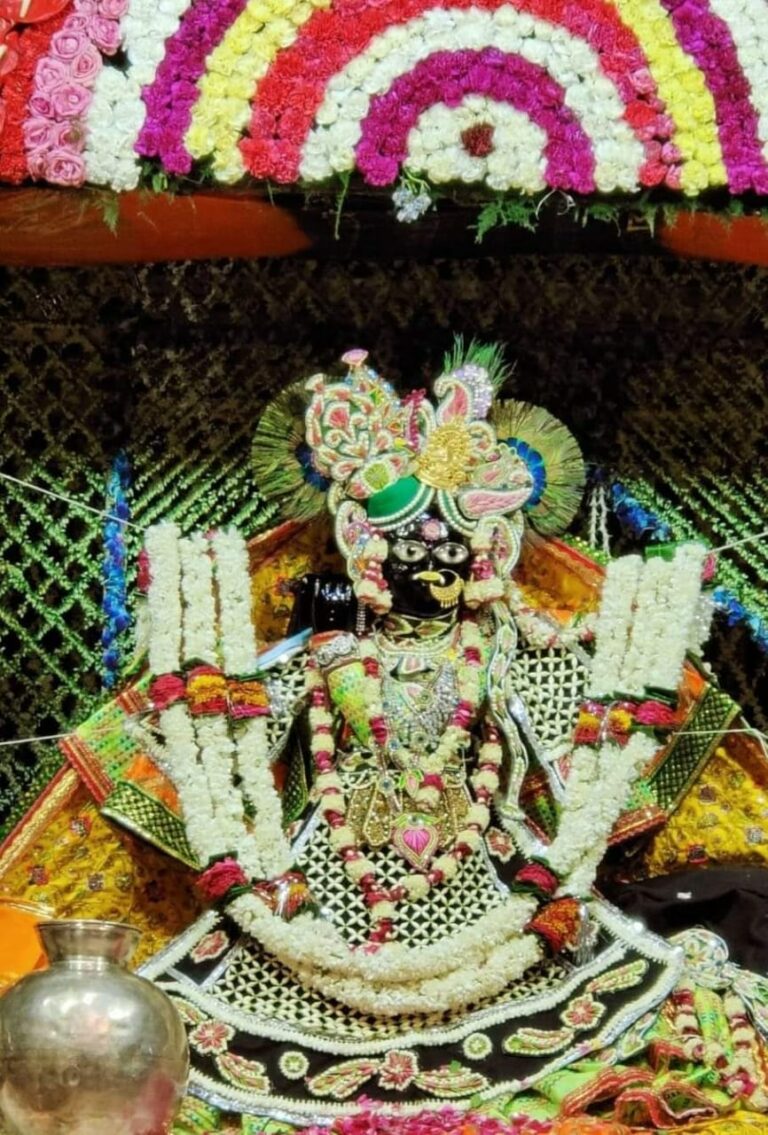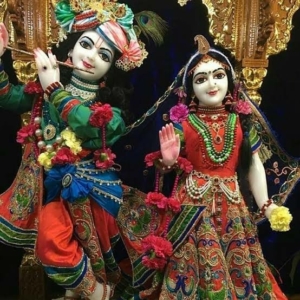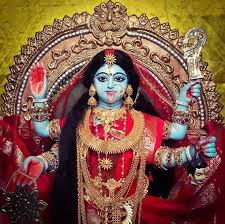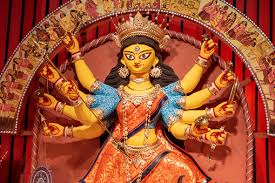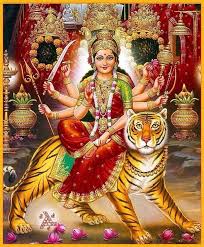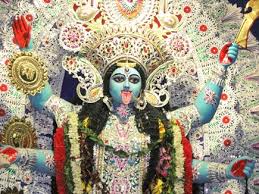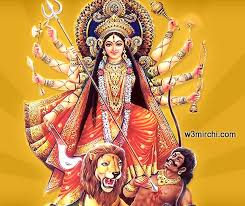हम नए साल की दहलीज पर खड़े हैं। हमारे लिए हर दिन नया है, हर साल नया है और हर नया साल एक नई उम्मीद, नया संकल्प और नये अवसर लेकर आता है। यह वह समय होता है जब हम अपने अतीत को पीछे छोड़कर भविष्य की ओर कदम बढ़ाते हैं। यह न केवल समय की एक और परिभाषा है, बल्कि हमारे भीतर छुपे उन अनगिनत संभावनाओं और सपनों की शुरुआत भी है, जिन्हें हम अब साकार करने का दृढ़ संकल्प लेते हैं। नए साल की दस्तक के साथ, हम हर दिन को एक नए अवसर के रूप में अपनाते हैं, जो हमें न केवल अपनी खुशियों को संजोने बल्कि अपनी जिंदगी को और बेहतर बनाने की प्रेरणा भी देता है।
ग्रेगोरियन कैलेंडर के अनुसार नए साल की पूर्व संध्या ३१ दिसंबर को पड़ती है और जश्न ०१ जनवरी के शुरुआती घंटों तक जारी रहता है। माना जाता है कि ऐसे खाद्य पदार्थ और नाश्ते जो सौभाग्य लाते हैं, मौज-मस्ती करने वालों द्वारा खाए जाते हैं। दुनिया भर में लोग गीत गाने और आतिशबाजी देखने जैसे रीति-रिवाजों के साथ जश्न मनाते हैं। चूंकि नया साल अच्छे बदलाव का एक बड़ा अवसर है, इसलिए कई लोग आने वाले वर्ष के लिए अपने संकल्प लिखते हैं।
विश्व में सर्वाधिक प्रचलित ग्रगोरियन कैलेंडर के इतिहास में जाए तो ०१ जनवरी को पहली बार ४५ ईसा पूर्व में नए साल की शुरुआत के रूप में मनाया गया था। इससे पहले, रोमन कैलेंडर मार्च में शुरू होता था और ३५५ दिनों तक चलता था। सत्ता में आने के बाद रोमन तानाशाह जूलियस सीजर ने कैलेंडर बदल दिया।
महीने के नाम के सम्मान में शुरुआत के रोमन देवता जानूस, जिनके दो चेहरे उन्हें भविष्य में आगे और साथ ही अतीत में पीछे देखने की अनुमति देते थे, ने ०१ जनवरी को वर्ष का पहला दिन बनाया। हालांकि, १६वीं शताब्दी के मध्य तक इसे यूरोप में व्यापक रूप से स्वीकार नहीं किया गया था।
ईसाई धर्म की शुरुआत के बाद, २५ दिसंबर, यीशु के जन्म का दिन, स्वीकार किया गया और ०१ जनवरी नए साल की शुरुआत को विधर्मी माना गया। जब तक पोप ग्रेगोरी ने जूलियन कैलेंडर को बदलकर ०१ जनवरी को वर्ष की आधिकारिक शुरुआत नहीं कर दी तब तक इसे स्वीकार नहीं किया गया। इसके अलावा ऐसा माना जाता है कि नया साल लगभग २,००० ईसा पूर्व या ४,००० साल पहले, प्राचीन बेबीलोन में शुरू हुआ था।
बसंत विषुव के बाद पहली अमावस्या पर आमतौर पर मार्च के अंत में, बेबीलोनियों ने नए साल को ११-दिवसीय उत्सव अकितु के साथ मनाया, जिसमें प्रत्येक दिन एक अलग समारोह शामिल था।
दरअसल, ग्रेगोरियन कैलेंडर ने वर्ष की लंबाई को सही करके पहले इस्तेमाल किए गए जूलियन कैलेंडर में अशुद्धियों को संशोधित किया गया। इसने लीप वर्षों के लिए अधिक सटीक प्रणाली शुरू की, जिससे समय की गणना में त्रुटि की संभावना कम हो गई। ग्रगोरियन कैलेंडर का उद्देश्य कैलेंडर वर्ष को सौर वर्ष के साथ अधिक निकटता से सिंक्रोनाइज करना था। जिससे यह सूर्य के चारों ओर पृथ्वी की कक्षा को ट्रैक करने में अधिक सटीक हो सके। इसकी शुरूआत कैथोलिक चर्च के प्राधिकार द्वारा समर्थित थी जिसका उस समय यूरोप में महत्वपूर्ण प्रभाव था।
शुरुआत में कैथोलिक देशों द्वारा और बाद में अन्य देशों द्वारा इसे अपनाने से इसकी व्यापक स्वीकृति में योगदान मिला। जैसे-जैसे यूरोपीय देशों ने अन्वेषण और उपनिवेशीकरण के माध्यम से अपने प्रभाव का विस्तार किया, ग्रेगोरियन कैलेंडर दुनिया भर में फैलता गया, जो अंतर्राष्ट्रीय व्यापार, कूटनीति और संचार के लिए मानक कैलेंडर बन गया। माना जाता है कि १६वीं और १७वीं शताब्दी के दौरान यूरोप के वैज्ञानिक और सांस्कृतिक प्रभुत्व ने भी ग्रेगोरियन कैलेंडर की वैश्विक स्वीकृति में योगदान दिया।
भारत के विभिन्न क्षेत्रों में वर्ष भर में कई दिन नव वर्ष दिवस के रूप में मनाए जाते हैं। पालन इस बात से निर्धारित होता है कि चंद्र, सौर या चंद्र-सौर कैलेंडर का पालन किया जा रहा है या नहीं। वे क्षेत्र जो सौर कैलेंडर का पालन करते हैं। नया साल पंजाब में बैसाखी, असम में बोहाग बिहू, तमिलनाडु में पुथंडु, केरल में विशु, ओडिशा में पना संक्रांति या ओडिया नबाबरसा और बंगाल में पोइला बोइशाख के रूप में आता है। यानी वैशाख, आम तौर पर यह दिन अप्रैल महीने की १४ या १५ तारीख को पड़ता है।
चंद्र कैलेंडर का पालन करने वाले लोग चैत्र महीने ( मार्च-अप्रैल के अनुरूप ) को वर्ष का पहला महीना मानते हैं। इसलिए आंध्र प्रदेश, तेलंगाना, कर्नाटक में उगादी और गुढ़ी पड़वा की तरह इस महीने के पहले दिन नया साल मनाया जाता है। महाराष्ट्र। इसी प्रकार, भारत में कुछ क्षेत्र लगातार संक्रांतियों के बीच की अवधि को एक महीना मानते हैं और कुछ अन्य लगातार पूर्णिमाओं के बीच की अवधि को एक महीना मानते हैं। गुजरात में नया साल दिवाली के अगले दिन के रूप में मनाया जाता है।
हिंदू कैलेंडर के अनुसार, यह हिंदू महीने कार्तिक के शुक्ल पक्ष प्रतिपदा को पड़ता है। चंद्र चक्र पर आधारित भारतीय कैलेंडर के अनुसार, कार्तिक वर्ष का पहला महीना है और गुजरात में नया साल कार्तिक (एकम) के पहले उज्ज्वल दिन पर पड़ता है। भारत के अन्य हिस्सों में, नए साल का जश्न वसंत ऋतु में शुरू होता है।
प्राचीन भरतीय पंचांग के महत्व को देखते हुए भारत सरकार ने वरिष्ठ भारतीय खगोल वैज्ञानिक मेघनाद साहा की अध्यक्षता में बनी पंचांग सुधार समिति की सिफारिश पर २२ मार्च १९५७ को ग्रेागोरियन के साथ ही राष्ट्रीय कैलेंडर भी जारी कर दिया जिसमें अन्य खगोलीय डेटा के साथ-साथ हिंदू धार्मिक कैलेंडर तैयार करने के लिए समय और सूत्र भी शामिल थे, ताकि इसे सुसंगत बनाया जा सके।
दरअसल पंचांग कमेटी के अध्यक्ष वरिष्ठ भारतीय खगोल वैज्ञानिक मेघनाद साहा वैज्ञानिक और औद्योगिक अनुसंधान परिषद के तत्वावधान में कैलेंडर सुधार समिति के प्रमुख थे। समिति के अन्य सदस्य ए.सी. बनर्जी, के.के. दफ्तरी, जे.एस. करंदीकर, गोरख प्रसाद, आर.वी. वैद्य और एन.सी. लाहिरी थे।
समिति के सामने कार्य वैज्ञानिक अध्ययन पर आधारित एक सटीक कैलेंडर तैयार करना था, जिसे पूरे भारत में समान रूप से अपनाया जा सके। यह एक बहुत बड़ा काम था। समिति को देश के विभिन्न हिस्सों में प्रचलित विभिन्न कैलेंडरों का विस्तृत अध्ययन करना था। समिति के समक्ष तीस अलग-अलग कैलेंडर थे। यह कार्य इस तथ्य से और भी जटिल हो गया था कि कैलेंडर के साथ धर्म और स्थानीय भावनाएँ भी जुड़ी हुई थीं।
भारत के पहले प्रधान मंत्री जवाहरलाल नेहरू ने १९५५ में प्रकाशित समिति की रिपोर्ट की प्रस्तावना में लिखा था कि “वे (विभिन्न कैलेंडर) देश में पिछले राजनीतिक विभाजनों का प्रतिनिधित्व करते हैं। अब जब हमने स्वतंत्रता प्राप्त कर ली है, तो यह स्पष्ट रूप से वांछनीय है हमारे नागरिक, सामाजिक और अन्य उद्देश्यों के लिए कैलेंडर में एक निश्चित एकरूपता होनी चाहिए और यह इस समस्या के वैज्ञानिक दृष्टिकोण पर किया जाना चाहिए।‘‘
आधिकारिक तौर पर उपयोग में चैत्र ०१, १८७९ शक संवत, या २२ मार्च, १९५७ को शुरू हुआ। हालांकि, सरकारी अधिकारी धार्मिक कैलेंडर के पक्ष में इस कैलेंडर के नए साल के दिन को काफी हद तक नजरअंदाज करते हैं।
।। सभी स्नेहीजनों को नववर्ष २०२५ की हार्दिक शुभकामनाएं ।।
We are standing on the threshold of the New Year. Every day is new for us, every year is new and every new year brings a new hope, new resolution and new opportunities. This is the time when we leave our past behind and move towards the future. This is not only another definition of time, but also the beginning of countless possibilities and dreams hidden within us, which we are now determined to realize. With the arrival of New Year, we embrace every day as a new opportunity, which inspires us not only to cherish our happiness but also to make our life better.
According to the Gregorian calendar, New Year’s Eve falls on 31 December and the celebrations continue till the early hours of 01 January. Foods and snacks that are believed to bring good luck are eaten by revelers. People all over the world celebrate with customs like singing songs and watching fireworks. Since the New Year is a great opportunity to make good changes, many people write their resolutions for the coming year.
If we go into the history of the Gregorian calendar, which is most prevalent in the world, January 1 was first celebrated as the beginning of the new year in 45 BC. Before this, the Roman calendar started in March and lasted 355 days. Roman dictator Julius Caesar changed the calendar after coming to power.
The month’s namesake honors Janus, the Roman god of beginnings whose two faces allowed him to look forward into the future as well as backward into the past, making January 1 the first day of the year. However, it was not widely accepted in Europe until the mid-16th century.
After the introduction of Christianity, December 25, the day of Jesus’ birth, became accepted and January 1, the beginning of the new year, was considered heretical. It was not accepted until Pope Gregory changed the Julian calendar to make the official start of the year on January 1. Additionally it is believed that the New Year began around 2,000 BC or 4,000 years ago, in ancient Babylon.
On the first new moon after the spring equinox, usually in late March, the Babylonians celebrated the New Year with the 11-day festival Akitu, which included a different ceremony each day.
Indeed, the Gregorian calendar corrected inaccuracies in the previously used Julian calendar by correcting the length of the year. This introduced a more accurate system for leap years, reducing the possibility of error in time calculations. The purpose of the Gregorian calendar was to synchronize the calendar year more closely with the solar year. This makes it more accurate in tracking the Earth’s orbit around the Sun. Its beginnings were supported by the authority of the Catholic Church, which had significant influence in Europe at the time.
Its adoption initially by Catholic countries and later by other countries contributed to its widespread acceptance. As European countries expanded their influence through exploration and colonization, the Gregorian calendar spread around the world, becoming the standard calendar for international trade, diplomacy, and communication. Europe’s scientific and cultural dominance during the 16th and 17th centuries is also believed to have contributed to the global acceptance of the Gregorian calendar.
Many days throughout the year are celebrated as New Year’s Day in different regions of India. Adherence is determined by whether the lunar, solar or lunisolar calendar is being followed. Regions that follow the solar calendar. The New Year falls as Baisakhi in Punjab, Bohag Bihu in Assam, Puthandu in Tamil Nadu, Vishu in Kerala, Pana Sankranti or Odia Nababarasa in Odisha and Poila Boishakh in Bengal. That means Vaishakh, generally this day falls on 14th or 15th of April.
People following the lunar calendar consider the month of Chaitra (corresponding to March–April) as the first month of the year. Therefore, in Andhra Pradesh, Telangana, Karnataka, New Year is celebrated on the first day of this month like Ugadi and Gudhi Padwa. Maharashtra. Similarly, some regions in India consider the period between consecutive solstices as one month and others consider the period between consecutive full moons as one month. In Gujarat New Year is celebrated the next day after Diwali.
According to the Hindu calendar, it falls on the Shukla Paksha Pratipada of the Hindu month Kartik. According to the Indian calendar based on the lunar cycle, Kartik is the first month of the year and the New Year in Gujarat falls on the first bright day of Kartik (Ekam). In other parts of India, New Year celebrations begin in the spring.
Considering the importance of the ancient Indian calendar, the Government of India, on the recommendation of the Calendar Reform Committee headed by senior Indian astronomer Meghnad Saha, on March 22, 1957, issued a national calendar along with the Gregorian calendar, which, along with other astronomical data, included the Hindu calendar. Timings and formulas for preparing the religious calendar were also included, to make it consistent.
In fact, senior Indian astronomer Meghnad Saha, chairman of the Calendar Committee, was the head of the Calendar Reform Committee under the aegis of the Council of Scientific and Industrial Research. Other members of the committee are A.C. Banerjee, K.K. Daftari, J.S. Karandikar, Gorakh Prasad, R.V. Vaidya and N.C. Was Lahiri.
The task before the committee was to prepare an accurate calendar, based on scientific studies, which could be adopted uniformly throughout India. This was a huge task. The committee was to make a detailed study of the different calendars prevalent in different parts of the country. There were thirty different calendars before the committee. The task was further complicated by the fact that religion and local sentiments were also associated with the calendar.
India’s first Prime Minister Jawaharlal Nehru wrote in the preface to the committee’s report published in 1955 that “They (the various calendars) represent past political divisions in the country. Now that we have attained independence, it is clearly desirable that there should be a certain uniformity in the calendar for our civil, social and other purposes and this should be done on a scientific approach to the problem.”
Officially in use began on Chaitra 01, 1879 Saka Samvat, or March 22, 1957. However, government officials largely ignore this calendar’s New Year’s Day in favor of the religious calendar.
, Best wishes to all the loved ones for New Year 2025.





